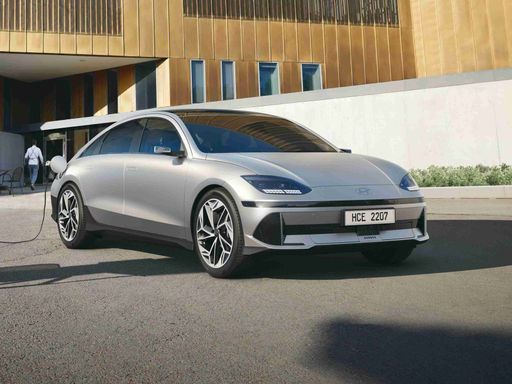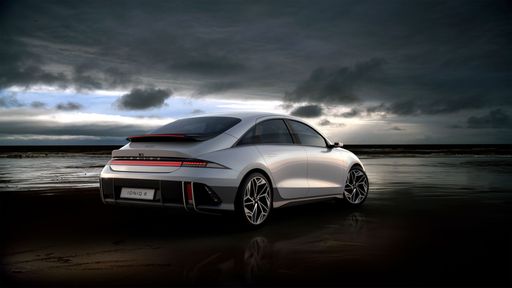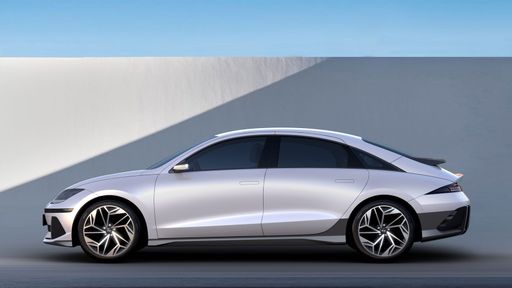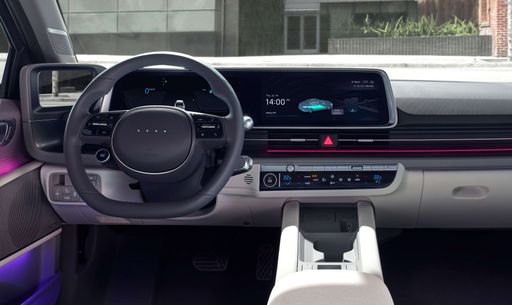Hyundai IONIQ 6 vs Volvo ES90 – Which car suits you better?
Two cars, one duel: Hyundai IONIQ 6 meets Volvo ES90.
Which one wins in performance, efficiency and value for money? Find out now!
Costs and Efficiency: Looking at overall running costs, both models reveal some interesting differences in everyday economy.
Hyundai IONIQ 6 has a convincingly advantage in terms of price – it starts at 37600 £, while the Volvo ES90 costs 61700 £. That’s a price difference of around 24077 £.
In terms of energy consumption, the advantage goes to the Hyundai IONIQ 6: with 13.90 kWh per 100 km, it’s slightly more efficient than the Volvo ES90 with 15.90 kWh. That’s a difference of about 2 kWh.
As for range, the Volvo ES90 performs a bit better – achieving up to 700 km, about 86 km more than the Hyundai IONIQ 6.
Engine and Performance: Power, torque and acceleration say a lot about how a car feels on the road. This is where you see which model delivers more driving dynamics.
When it comes to engine power, the Volvo ES90 has a barely noticeable edge – offering 680 HP compared to 650 HP. That’s roughly 30 HP more horsepower.
In acceleration from 0 to 100 km/h, the Hyundai IONIQ 6 is noticeable quicker – completing the sprint in 3.20 s, while the Volvo ES90 takes 4 s. That’s about 0.80 s faster.
In terms of top speed, the Hyundai IONIQ 6 performs clearly perceptible better – reaching 257 km/h, while the Volvo ES90 tops out at 180 km/h. The difference is around 77 km/h.
There’s also a difference in torque: Volvo ES90 pulls somewhat stronger with 870 Nm compared to 770 Nm. That’s about 100 Nm difference.
Space and Everyday Use: Cabin size, boot volume and payload all play a role in everyday practicality. Here, comfort and flexibility make the difference.
Both vehicles offer seating for 5 people.
In curb weight, Hyundai IONIQ 6 is noticeable lighter – 1850 kg compared to 2410 kg. The difference is around 560 kg.
In terms of boot space, the Volvo ES90 offers slight more room – 424 L compared to 401 L. That’s a difference of about 23 L.
When it comes to payload, Volvo ES90 somewhat takes the win – 500 kg compared to 430 kg. That’s a difference of about 70 kg.
Who comes out on top?
Overall, the Hyundai IONIQ 6 shows itself to be dominates this comparison and secures the title of DriveDuel Champion.
It convinces with the more balanced overall package and proves to be the more versatile choice for everyday use.

Hyundai IONIQ 6
Hyundai IONIQ 6
The Hyundai IONIQ 6 merges futuristic design with eco-friendly technology, offering a glimpse into the future of electric mobility. Its sleek silhouette and aerodynamic profile are sure to capture attention on the road, while the interior provides a seamless blend of comfort and cutting-edge digital features. With a focus on efficiency and sustainability, this model represents a significant step forward in the evolution of electric vehicles.
details @ hyundai.news
@ hyundai.news
 @ hyundai.news
@ hyundai.news
 @ hyundai.news
@ hyundai.news
 @ hyundai.news
@ hyundai.news
Volvo ES90
The Volvo ES90 stands out as a luxury sedan, embodying Scandinavian elegance combined with innovative technology. Its sleek design is complemented by a plush interior that emphasizes comfort and safety, aligning with Volvo's renowned reputation. With advanced features and a focus on sustainability, the ES90 is a testament to the brand's commitment to responsible luxury.
details

|
|
|
|
|
Costs and Consumption |
|
|---|---|
|
Price
37600 - 64300 £
|
Price
61700 - 81000 £
|
|
Consumption L/100km
-
|
Consumption L/100km
-
|
|
Consumption kWh/100km
13.9 - 15.1 kWh
|
Consumption kWh/100km
15.9 - 17.1 kWh
|
|
Electric Range
429 - 614 km
|
Electric Range
651 - 700 km
|
|
Battery Capacity
53 - 84 kWh
|
Battery Capacity
88 - 102 kWh
|
|
co2
0 g/km
|
co2
0 g/km
|
|
Fuel tank capacity
-
|
Fuel tank capacity
-
|
Dimensions and Body |
|
|---|---|
|
Body Type
Hatchback
|
Body Type
Hatchback
|
|
Seats
5
|
Seats
5
|
|
Doors
4
|
Doors
5
|
|
Curb weight
1850 - 2095 kg
|
Curb weight
2410 - 2610 kg
|
|
Trunk capacity
401 L
|
Trunk capacity
424 L
|
|
Length
4855 - 4935 mm
|
Length
5000 mm
|
|
Width
1880 - 1940 mm
|
Width
1942 mm
|
|
Height
1495 mm
|
Height
1546 mm
|
|
Max trunk capacity
-
|
Max trunk capacity
1427 L
|
|
Payload
425 - 430 kg
|
Payload
490 - 500 kg
|
Engine and Performance |
|
|---|---|
|
Engine Type
Electric
|
Engine Type
Electric
|
|
Transmission
Automatic
|
Transmission
Automatic
|
|
Transmission Detail
Reduction Gearbox
|
Transmission Detail
Reduction Gearbox
|
|
Drive Type
Rear-Wheel Drive, All-Wheel Drive
|
Drive Type
Rear-Wheel Drive, All-Wheel Drive
|
|
Power HP
151 - 650 HP
|
Power HP
333 - 680 HP
|
|
Acceleration 0-100km/h
3.2 - 8.8 s
|
Acceleration 0-100km/h
4 - 6.6 s
|
|
Max Speed
185 - 257 km/h
|
Max Speed
180 km/h
|
|
Torque
350 - 770 Nm
|
Torque
480 - 870 Nm
|
|
Number of Cylinders
-
|
Number of Cylinders
-
|
|
Power kW
111 - 478 kW
|
Power kW
245 - 500 kW
|
|
Engine capacity
-
|
Engine capacity
-
|
General |
|
|---|---|
|
Model Year
2022 - 2025
|
Model Year
2025
|
|
CO2 Efficiency Class
A
|
CO2 Efficiency Class
A
|
|
Brand
Hyundai
|
Brand
Volvo
|
What drive types are available for the Hyundai IONIQ 6?
Available configurations include Rear-Wheel Drive or All-Wheel Drive.
The prices and data displayed are estimates based on German list prices and may vary by country. This information is not legally binding.
